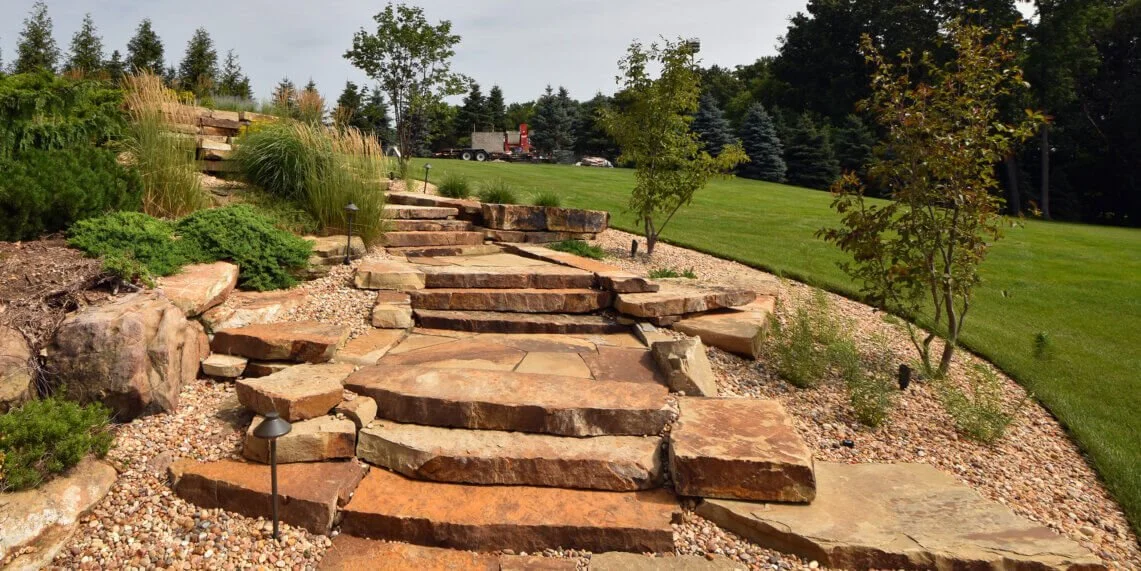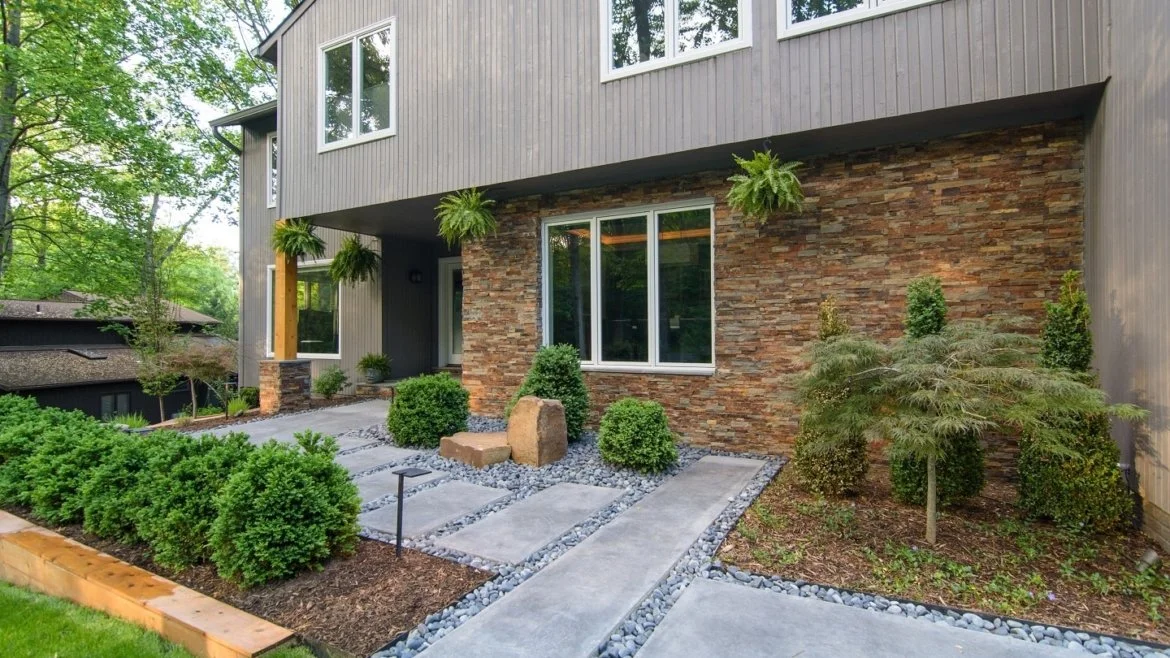Exploring Various Landscaping Options for New Construction Homes: A Comprehensive Cost Analysis
Introduction:
When it comes to new construction homes, the landscaping surrounding the property plays a vital role in enhancing its curb appeal, creating an inviting atmosphere, and adding value to the overall investment. With numerous landscaping options available, homeowners have the opportunity to tailor their outdoor spaces to their personal tastes and preferences. However, it's important to consider both the aesthetic appeal and the associated costs when planning the landscaping for your new construction home. In this article, we will explore different types of landscaping for new construction homes and delve into the cost considerations involved.
Basic Landscaping:
For those looking for a budget-friendly option or a simple and low-maintenance landscape, basic landscaping can be an ideal choice. This typically includes minimal lawn areas, a few strategically placed shrubs, and perhaps a small flower bed. Basic landscaping can create a clean and neat appearance while requiring minimal upkeep. The cost of basic landscaping can vary depending on factors such as the size of the lawn, the number of plants, and the quality of materials used. On average, basic landscaping can cost between $2,000 and $5,000.
Traditional Landscaping:
Traditional landscaping often features well-manicured lawns, flower beds, and a variety of shrubs and trees. This style emphasizes symmetry and order, creating a timeless look that appeals to many homeowners. Traditional landscaping may also include features like pathways, decorative hardscapes, and outdoor lighting. The cost of traditional landscaping can range from $5,000 to $15,000, depending on the size of the property, the complexity of the design, and the selection of plants and materials.
Naturalistic Landscaping:
In recent years, naturalistic or ecological landscaping has gained popularity. This style seeks to mimic the patterns and diversity found in natural ecosystems while requiring less maintenance and water. Native plants, ornamental grasses, and wildflower meadows are often incorporated into naturalistic landscapes to attract pollinators and wildlife. Additionally, features like rain gardens and permeable paving can help manage stormwater runoff. The cost of naturalistic landscaping can vary widely, depending on the size of the area and the selection of plants. On average, expect to spend between $7,000 and $20,000 for this type of landscaping.
Xeriscaping:
Xeriscaping Landscaping
Xeriscaping is an environmentally friendly landscaping option that focuses on conserving water and reducing maintenance. It utilizes drought-tolerant plants, mulch, and efficient irrigation systems to minimize water usage. Xeriscaping can be an excellent choice for regions with limited water resources or for homeowners seeking to reduce their ecological footprint. The cost of xeriscaping depends on factors such as the size of the area, the choice of plants, and the complexity of the design. Generally, xeriscaping can range from $5,000 to $15,000.
Modern Landscaping:
Modern Landscaping:
For those seeking a contemporary and sleek aesthetic, modern landscaping offers clean lines, minimalism, and a focus on architectural elements. This style often includes geometric shapes, concrete or stone pavers, ornamental grasses, and carefully chosen plants that complement the overall design. Modern landscaping can also incorporate features like water features, outdoor seating areas, and fire pits. The cost of modern landscaping can vary significantly depending on the design complexity, materials used, and additional features. On average, homeowners should expect to spend between $10,000 and $30,000 for this type of landscaping.
Replanting Large Trees for Landscaping: Factors to Consider and Associated Costs
Trees Replanting
The majestic presence of large trees adds immense value and beauty to any landscape. However, there are occasions when replanting becomes necessary due to construction projects, changes in the layout, or simply the desire for a fresh landscape design. Replanting large trees requires careful planning, expertise, and adequate resources. In this article, we will explore the considerations involved in replanting large trees for landscaping and discuss the associated costs.
Tree Selection and Evaluation:
Before initiating the replanting process, it is crucial to assess the health and condition of the existing trees. Engage the services of a certified arborist who can determine if the tree is suitable for transplantation. Factors such as root structure, size, age, and overall health will influence the success of the replanting process. The arborist will also evaluate the compatibility of the tree species with the new location and soil conditions.
Tree Transplantation Techniques:
Transplanting large trees is a complex and labor-intensive task that requires specialized equipment and expertise. Several techniques can be employed, including root ball transplanting, air spading, and crane-assisted relocation. Root ball transplanting involves digging a large ball of soil around the tree's root system, while air spading utilizes compressed air to remove soil without damaging the roots. Crane-assisted relocation is employed when the tree's size and weight necessitate lifting it with a crane. The chosen technique will depend on the tree's size, accessibility, and the specific requirements of the project.
Site Preparation:
Preparing the new site for tree transplantation is crucial for ensuring successful establishment and growth. The soil should be properly amended with organic matter to improve its quality and drainage capabilities. The site must provide adequate space for the tree's mature size, taking into consideration its canopy spread, root system, and potential interactions with buildings, utility lines, or other structures. Ensuring proper irrigation and drainage systems are in place is vital for the tree's long-term health and vitality.
Professional Arborist Services:
Replanting large trees is a highly specialized task that requires the expertise of professional arborists. These trained individuals possess the knowledge and experience to handle the intricate process of tree transplantation safely. They will assess the feasibility of the project, determine the appropriate techniques, and oversee the entire replanting process. Hiring professional arborist services will ensure the best chances of success for your tree transplantation endeavor.
Cost Considerations:
The cost of replanting large trees for landscaping can vary depending on several factors. These include the size and species of the tree, accessibility of the site, required equipment, and the complexity of the project. On average, the cost of replanting large trees can range from $1,500 to $10,000 per tree. Factors such as the distance of transportation, soil preparation, ongoing care, and additional services like pruning or staking may also impact the overall cost.
Conclusion:
The landscaping surrounding a new construction home has a significant impact on its overall appearance and value. From basic and traditional styles to naturalistic, xeriscaping, and modern designs, homeowners have a variety of options
Replanting large trees for landscaping is a complex process that requires careful planning, expert evaluation, and professional assistance. While the cost of replanting large trees can be significant, the investment is worthwhile when considering the beauty, value, and environmental benefits these majestic trees bring to the landscape. By engaging the services of certified arborists and following proper techniques, you can successfully transplant large trees and create a breathtaking landscape that will endure for generations to come.



